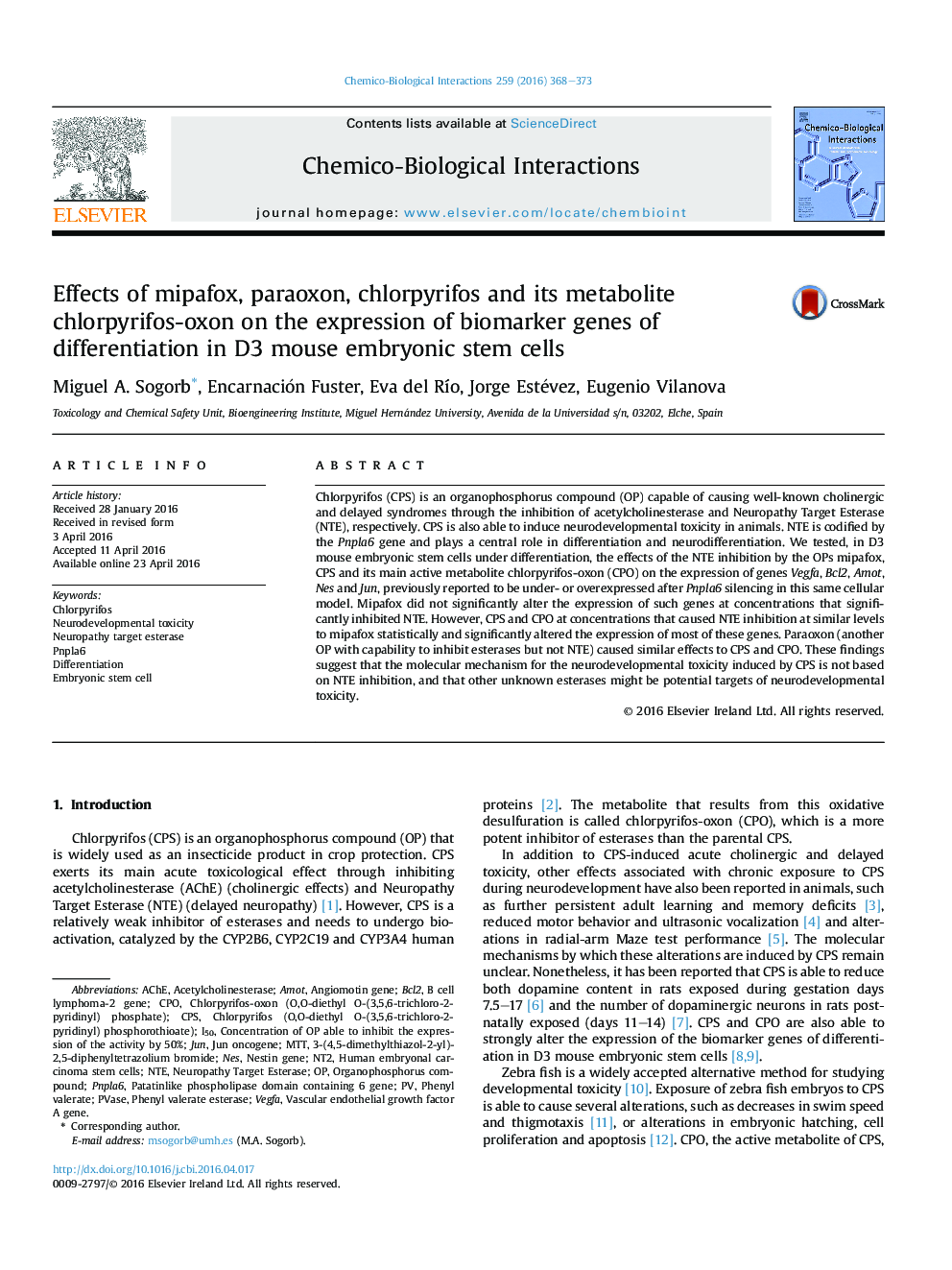| کد مقاله | کد نشریه | سال انتشار | مقاله انگلیسی | نسخه تمام متن |
|---|---|---|---|---|
| 5559547 | 1403288 | 2016 | 6 صفحه PDF | دانلود رایگان |

- Inhibition of NTE by mipafox did not alter 5 markers of differentiation in D3 cells.
- Chlorpyrifos and paraoxon altered the expression of 5 markers of differentiation.
- Neurodevelopmental effects induced by chlorpyrifos are not caused by NTE inhibition.
- Paraoxon-sensitive esterases are potential targets of developmental toxicity by OPs.
Chlorpyrifos (CPS) is an organophosphorus compound (OP) capable of causing well-known cholinergic and delayed syndromes through the inhibition of acetylcholinesterase and Neuropathy Target Esterase (NTE), respectively. CPS is also able to induce neurodevelopmental toxicity in animals. NTE is codified by the Pnpla6 gene and plays a central role in differentiation and neurodifferentiation. We tested, in D3 mouse embryonic stem cells under differentiation, the effects of the NTE inhibition by the OPs mipafox, CPS and its main active metabolite chlorpyrifos-oxon (CPO) on the expression of genes Vegfa, Bcl2, Amot, Nes and Jun, previously reported to be under- or overexpressed after Pnpla6 silencing in this same cellular model. Mipafox did not significantly alter the expression of such genes at concentrations that significantly inhibited NTE. However, CPS and CPO at concentrations that caused NTE inhibition at similar levels to mipafox statistically and significantly altered the expression of most of these genes. Paraoxon (another OP with capability to inhibit esterases but not NTE) caused similar effects to CPS and CPO. These findings suggest that the molecular mechanism for the neurodevelopmental toxicity induced by CPS is not based on NTE inhibition, and that other unknown esterases might be potential targets of neurodevelopmental toxicity.
Journal: Chemico-Biological Interactions - Volume 259, Part B, 25 November 2016, Pages 368-373